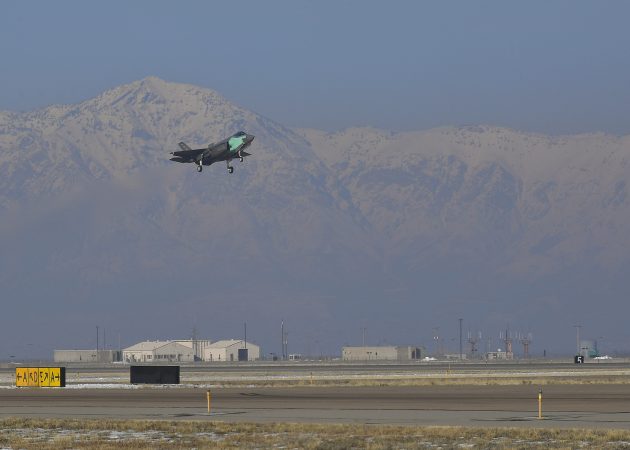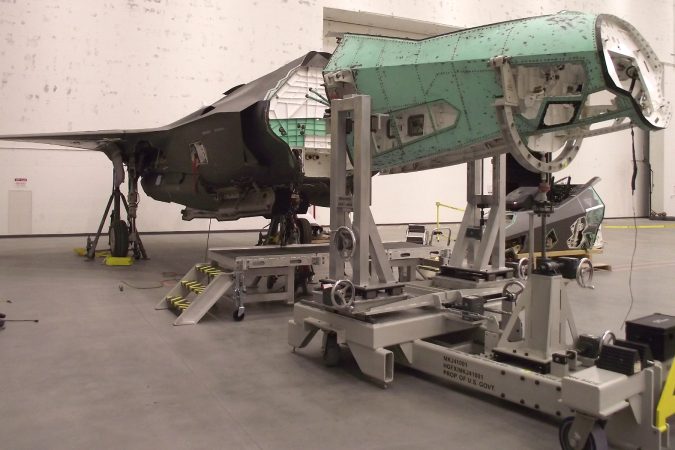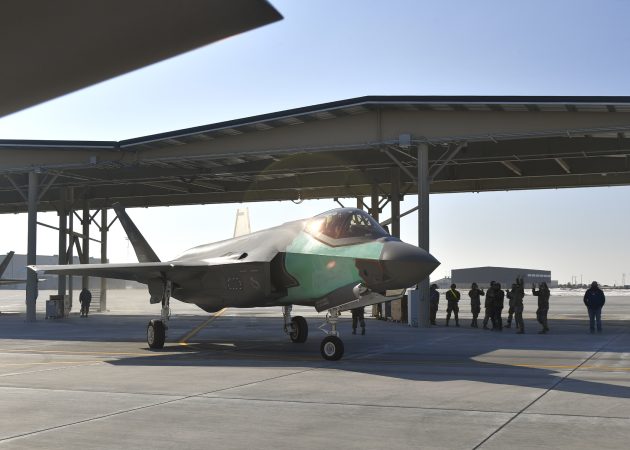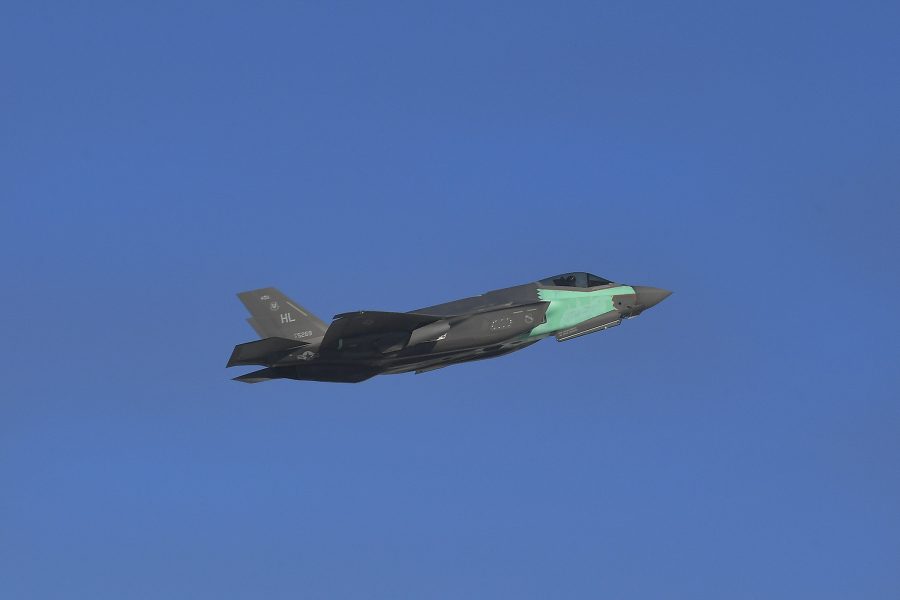The Air Force’s first-ever effort to stitch two damaged F-35s into a single stealth fighter is nearing its final stages, with successful functional check flights now complete.
Dubbed the “Franken-bird,” the aircraft made its inaugural flight Jan. 16, a spokesperson for the 388th Fighter Wing at Hill Air Force Base, Utah, told Air & Space Forces Magazine. The fighter is now at Lockheed Martin’s assembly plant at Fort Worth, Texas, for additional tests before it returns to combat status.
There, the aircraft will also undergo final work on the section just behind its nose, which currently has only anti-corrosion primer, to apply low-observable materials.

“According to Lockheed Martin estimates, the aircraft is expected to be completed within an eight-week timeframe, with a projected return date of late March at the earliest,” the spokesperson said. Once the jet receives its final certifications, it will return to Hill and be operated by the 4th Fighter Squadron.
The project is estimated to have cost less than $6 million, a fraction of the typical $80 million for a brand-new F-35A. Dave Myers, lead engineer at the F-35 Joint Program Office, explained in a release that by combining the best parts of both aircraft, the result will be a fully capable jet with no loss in performance. The “new” fighter, designated as tail number -5269, was created from the wrecks of two earlier F-35s:
- AF-27, which suffered a severe engine fire in 2014 at Eglin Air Force Base, Fla.
- AF-211, which survived a landing gear collapse in 2020 at Hill
“When we received the aircraft, it was pretty much a shell,” Senior Airman Jaguar Arnold, the aircraft’s dedicated crew chief, said in a release. “There were a lot of tasks to complete that we hadn’t done before at the unit level.”
The “Franken-bird” team included the F-35 JPO, Airmen and civilians from the 388th Fighter Wing and Ogden Air Logistics Complex, and Lockheed Martin technicians. The team created custom tools and equipment to join the aircraft sections at Ogden before the jet returned to Hill in November 2023. Since then, maintainers have worked on the final restoration stages.
Merging the two wrecked planes involved a list of first-time tasks that hadn’t been tackled before. The work included reinstalling landing gear, rewiring the aircraft, rebuilding the cockpit and avionics, and installing a variety of components. The team also procured and installed “belly bands” between and just forward of the air intakes. These bands, made of composite material, provide extra structural support, and reinforced the aircraft’s body after the new nose was installed.

The groundwork for the project was laid back in January 2020, when the JPO turned to Lockheed Martin for insights on repairing F-22s. At that point, the JPO had already started salvaging damaged F-35 components, improving maintenance, and getting creative with parts, including turning the AF-27 into a trainer jet for Aircraft Deployed Battle Repair.
“When we took responsibility for this project, we were taking on something unprecedented at the field level and it wasn’t easy,” said 1st Lt. Ryan Bare, Sortie Generation Flight commander for the 4th Fighter Generation Squadron. “But we were also taking on an opportunity for our maintainers to gain proficiency in this type of work and build experience at the unit level. As a program, and as a unit, we’ve benefited greatly from this.”
The JPO has collected Insights and feedback from the process to update data and procedures for all F-35 maintainers. The service also anticipates this project paving the way for future reclamation tasks with the equipment, techniques, and expertise developed throughout the effort.

